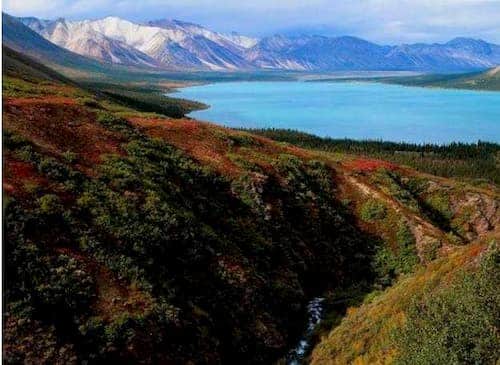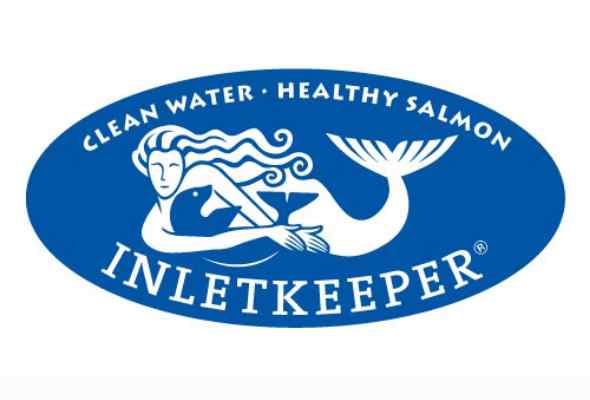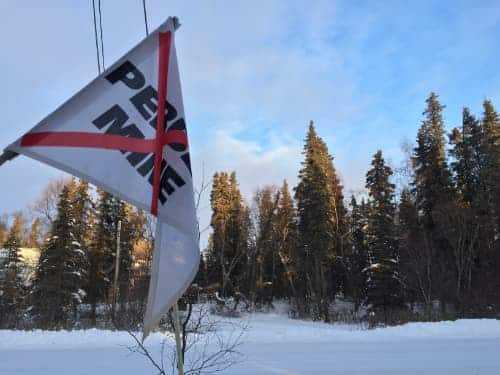Bristol Bay fishermen ramp up efforts to save their industry and look to Congress for suspension of rushed Pebble Mine permitting process
Naknek, AK — The Alaska Department of Fish and Game has announced the season’s first commercial fishing openers in Bristol Bay. As fishermen turn their attention to the fishing grounds, the future of Bristol Bay hangs in limbo in the final days of the U.S. Army Corps of Engineers’ public comment period for the Pebble Mine Draft EIS. For many in Bristol Bay’s fishing industry, this winter was anything but restful; instead they were fighting to save their livelihoods. As the salmon run builds to a crescendo, so too are the efforts of Commercial Fishermen to protect their jobs and way of life from the proposed pebble mine.
“Our industry in Bristol Bay is in the fight of our lives against relentless attempts by the Pebble Limited Partnership, fueled by a “dig baby dig” attitude from the US Army Corps of Engineers, to develop the world’s largest and most dangerous open pit mine at the headwaters of our fishery. At this point Bristol Bay fishermen and Alaskans, who still overwhelmingly oppose Pebble, are looking to Sen. Lisa Murkowski to deliver on her longtime promise of ensuring a permitting process that protects the interests of Alaskans and does not trade one resource for another,” said lifelong Alaskan Alexus Kwachka from his boat F/V No Point on opening day in Naknek Alaska.
Senator Murkowski reiterated her promise in letters to commercial fishermen over the past few months. In response to the United Fishermen of Alaska’s request that she call for a halt to the flawed and corrupt NEPA process currently underway by the U.S. Army Corps of Engineers, Senator Murkowski wrote: “As I have said in the past, we must have confidence that Bristol Bay’s world-class fisheries are protected, and I expect the Corps’ process to remain fair, rigorous and transparent as Alaskans provide their views to the [Army Corps] . . . I will continue to carefully watch as the Pebble undergoes a measured, fully inclusive, and transparent permitting process.”
[content id=”79272″]
“These and other similar statements from Sen. Murkowski and other members of the Alaska Delegation are far from reassuring,” says Bristol Bay gillnetter Mark Niver. He points to recent letters from fisheries scientists and others, highly critical of the Pebble DEIS and the Army Corps. efforts to this point
The American Fisheries Society which represents over 7,500 professional fishery scientists and resource managers sent a letter to the Corps stating: “Based on our review of the DEIS, we find it fails to meet basic standards of scientific rigor in a region that clearly demands the highest level of scrutiny and thoroughness. The DEIS is an inadequate assessment of the potential impacts of the project. Specifically, as described below, we find the DEIS is deficient because 1) impacts and risks to fish and their habitats are underestimated; 2) many conclusions are not supported by the data or analysis provided; and 3) critical information is missing.”
Furthermore, Dr. Daniel Schindler of the School of Aquatic and Fisheries Sciences at the University of Washington in his analysis of the Army Corps Draft EIS states “The US Army Corps of Engineers is considering Pebble’s mine permit application and released its Draft Environmental Impact Statement (EIS) for public comment. The National Environmental Protection Act (NEPA) EIS process is widely considered the “gold standard” for assessing risks to ecosystems from resource development and it is intended to be scientifically rigorous and fair. However, the outcome from this process is only as good as the science that informs it; if you put garbage in, you get garbage out. The Pebble EIS distinctly underestimates long-term risks to water, fish, and people – it concludes there are none! The Army Corps of Engineers should be sent back to the drawing board to produce a credible assessment.”
The North Pacific Fisheries Management Council also sent a letter writing “The value and reputation of commercial fisheries in Alaska has been earned by consistently providing a superior product to global markets. Both the value and reputation of Bering Sea, Gulf of Alaska, and other Alaska fisheries are dependent on the pristine waters of Alaska’s marine ecosystems, and the Alaska Seafood Marketing Institute has worked to ensure that the well-earned reputation is a hallmark of North Pacific fisheries. Any analysis that considers development of a large-scale mine in the area must also consider reasonably foreseeable future actions, including the potential impacts not only on fish populations and habitat, but also on both the value and reputation of North Pacific fisheries”. The Corps EIS fails to consider impacts to the Alaska Seafood brand and reputation.
Trident Seafoods Corporation, which is investing in a thorough review of the draft EIS for Pebble, wrote in a recent pre-season letter to their Bristol Bay fleet of fishermen: “Trident Seafoods opposes the Pebble Mine project because it poses a significant risk to the many families, businesses, and communities that rely upon the natural resources of Bristol Bay. . . The current analysis does not provide certainty because among other things it only analyzes a 20-year timeframe and unrealistically small footprint for the mine. It does not consider the impact of a catastrophic failure and fails to study the effect on the marketability and perception of Alaskan seafood”.








